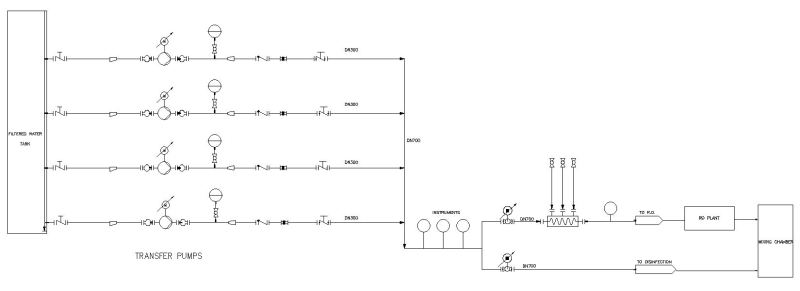qubitsized
Civil/Environmental
Hello Everyone!
Suppose I have 3+1 VFD pumps abstracting 18000 m^3/day of water from a filtered water tank. The pumps discharge at a common header. The header then branches into two pipes, one goes to disinfection tank, one goes to the RO then to the disinfection tank. See figure below:

Consider 3 general cases:
Case 1-Water is good: All the water goes to disinfection tank directly.
Case 2-Water is bad: All the water goes to RO, then to disinfection.
Case 3-Water is average: Water is split and blended, say 70% goes to RO and 30% goes to disinfection.
For case 3, will the above configuration work? The valves at the header going to RO and disinfection are both modulating.
Thank you for any opinion/advise!
Suppose I have 3+1 VFD pumps abstracting 18000 m^3/day of water from a filtered water tank. The pumps discharge at a common header. The header then branches into two pipes, one goes to disinfection tank, one goes to the RO then to the disinfection tank. See figure below:

Consider 3 general cases:
Case 1-Water is good: All the water goes to disinfection tank directly.
Case 2-Water is bad: All the water goes to RO, then to disinfection.
Case 3-Water is average: Water is split and blended, say 70% goes to RO and 30% goes to disinfection.
For case 3, will the above configuration work? The valves at the header going to RO and disinfection are both modulating.
Thank you for any opinion/advise!
